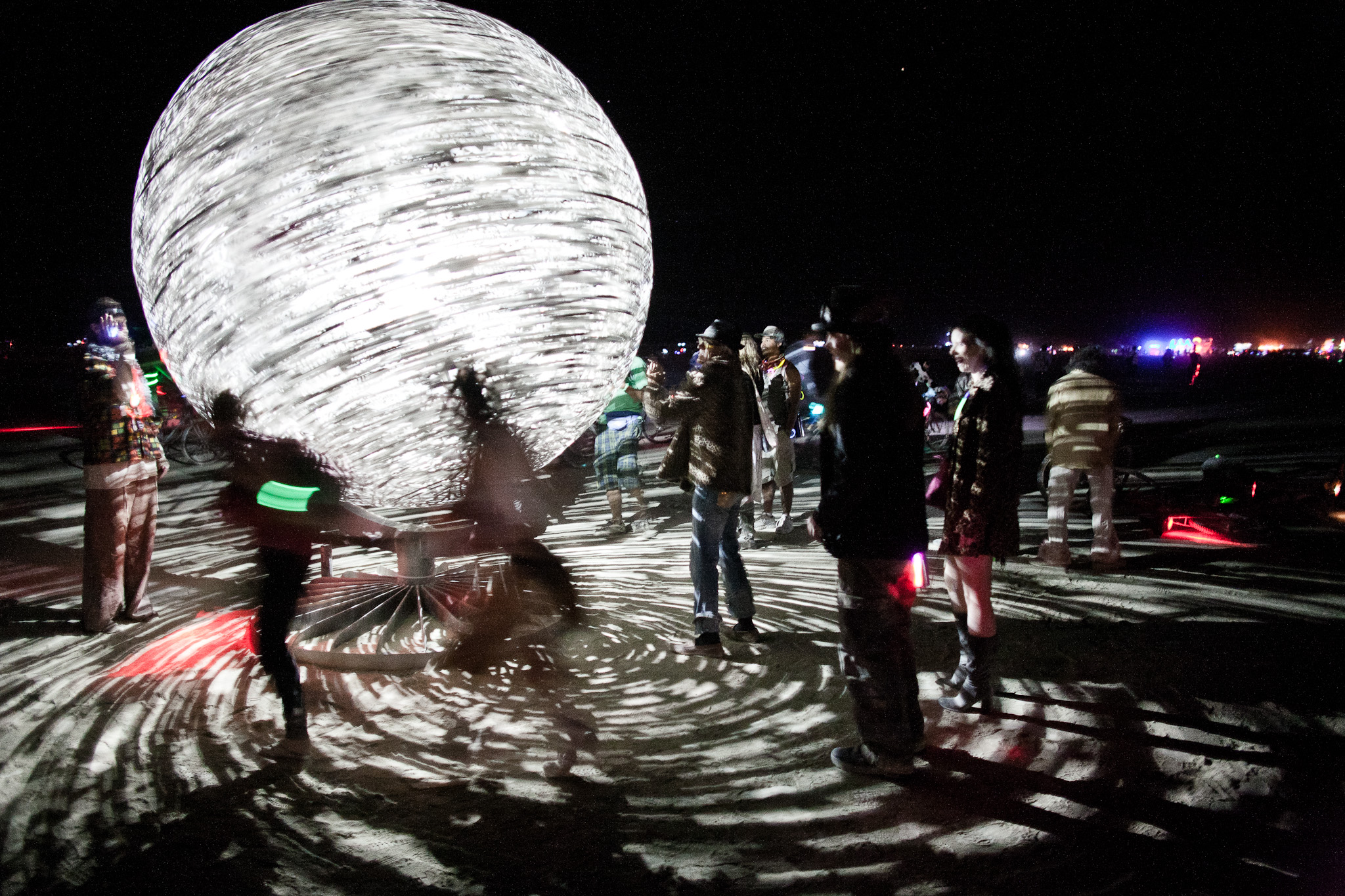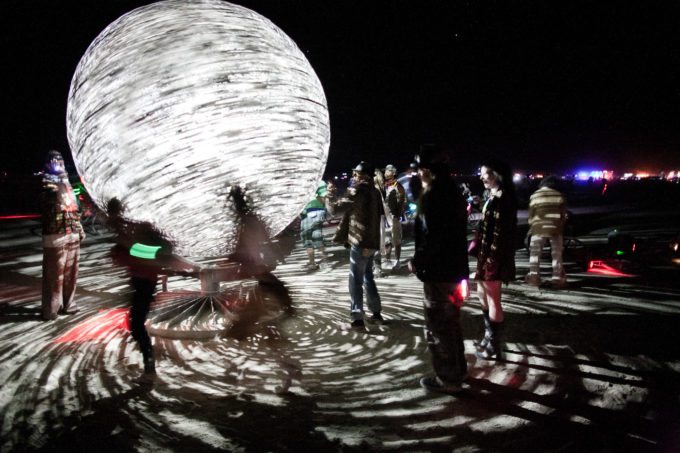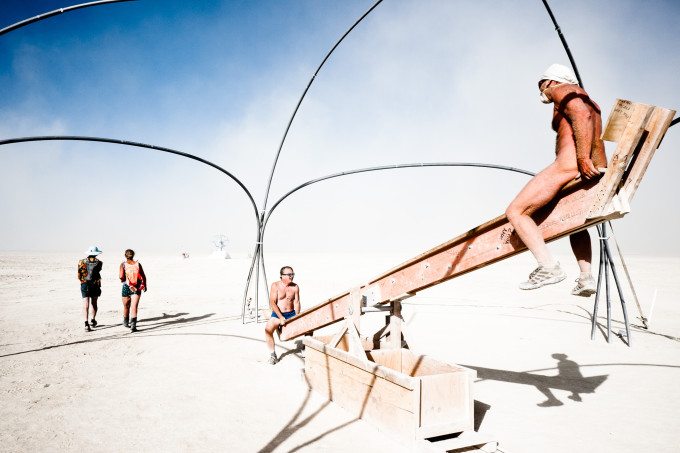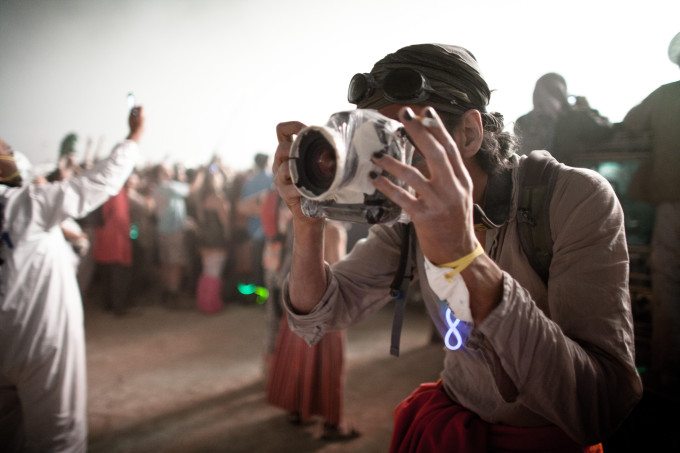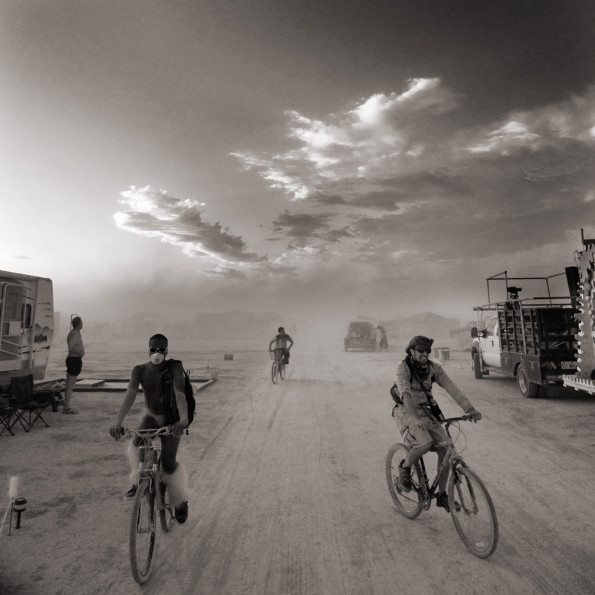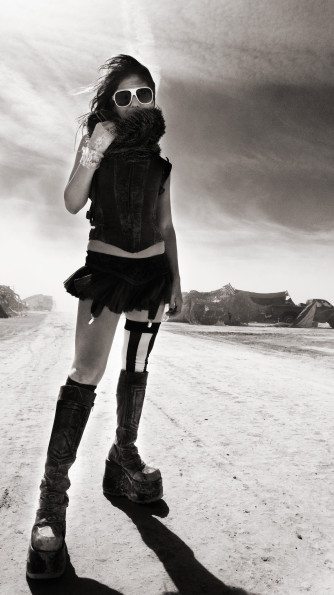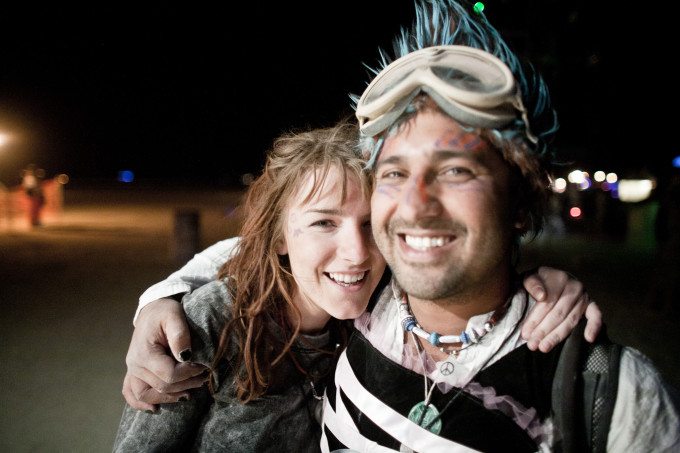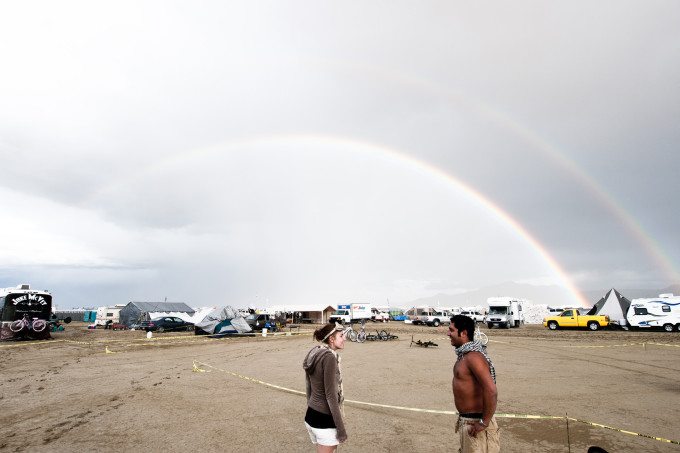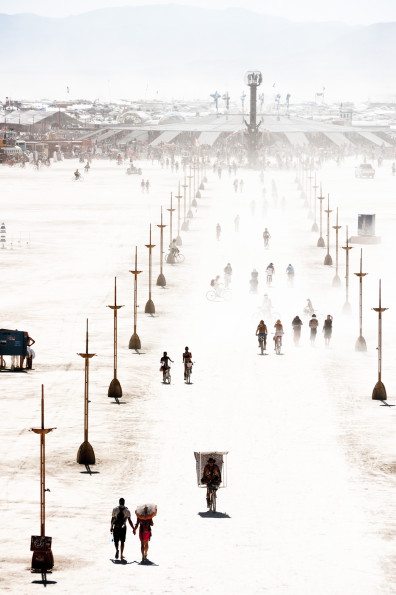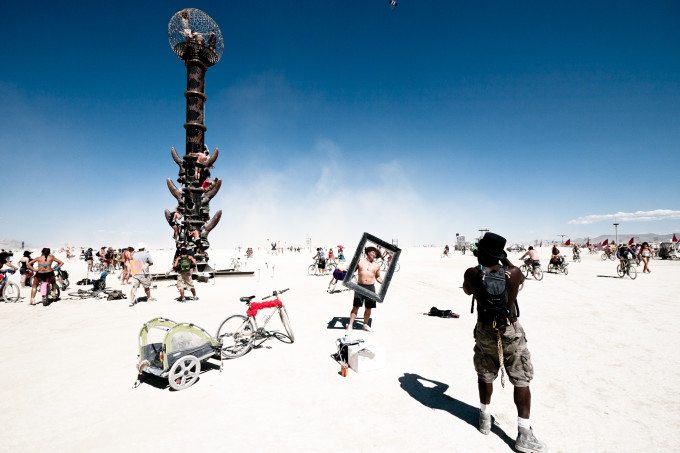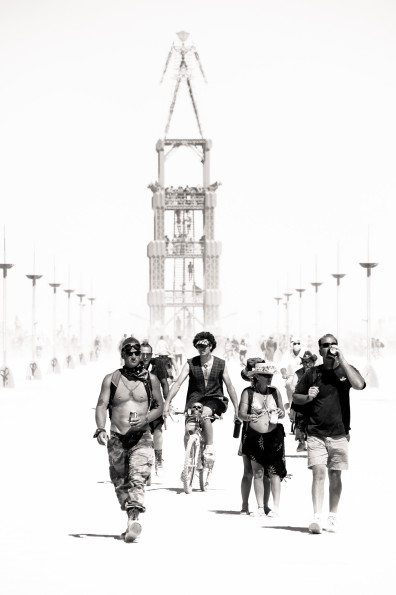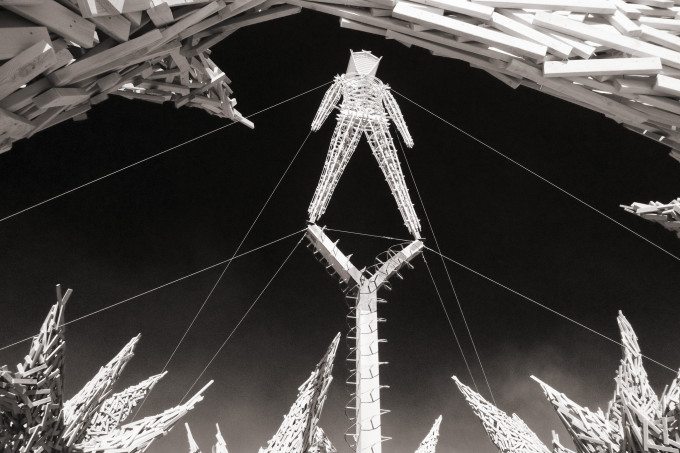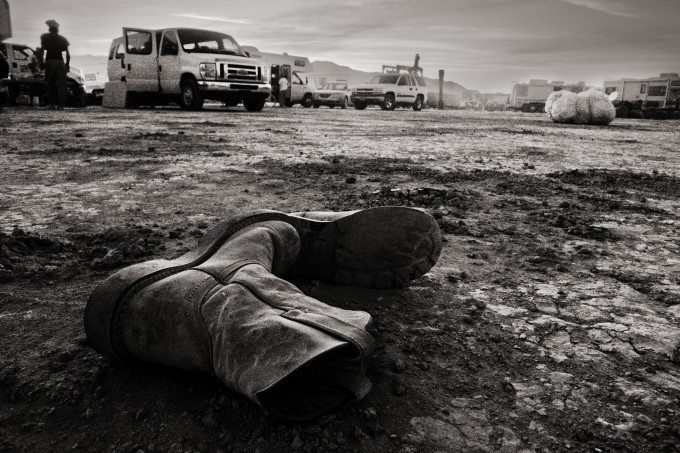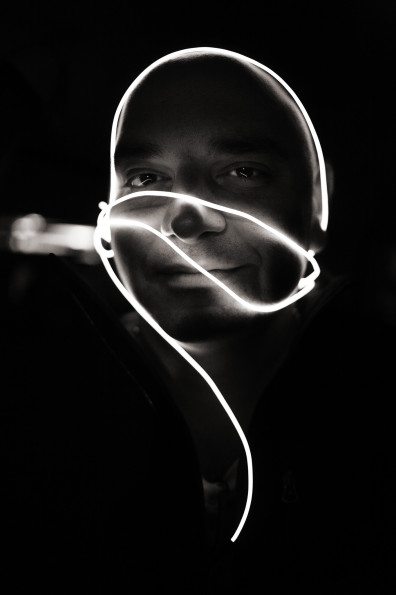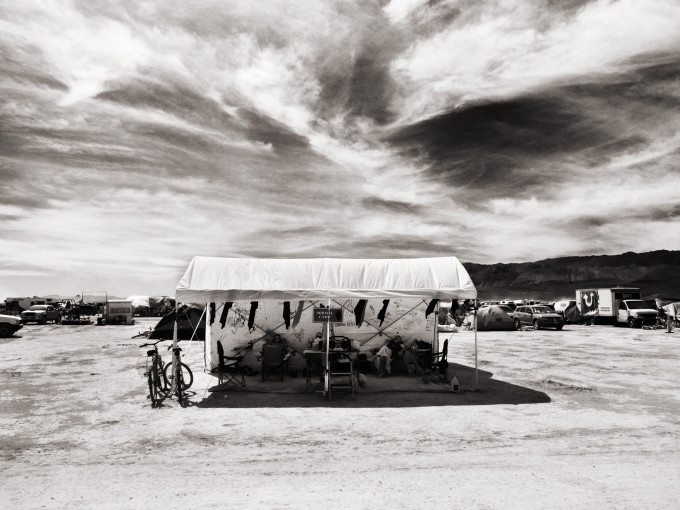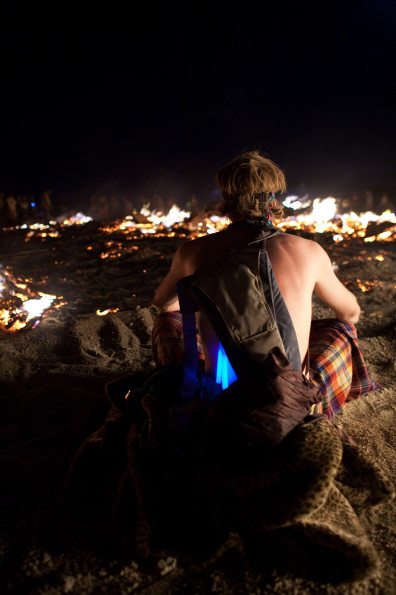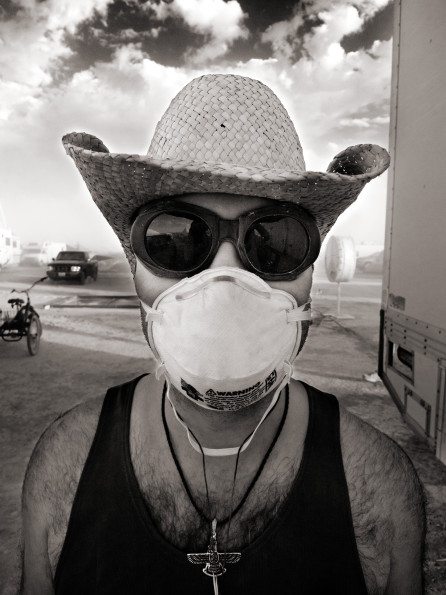Photo used with permission by Mark Probst
Burning Man has been gaining more and more press and attracting larger crowds in the past couple of years. The annual weeklong festival takes place in the deserts and is a place where artists and those brave enough venture out and test their own self-reliance. Many photographers also try to attend and document the happenings as they take place. Preparation isn’t simple though and to find out more we talked to photographer Mark Probst; who has been attending the festival for years. Be sure to follow him on Instagram when he attends this year, or feel free to check out his Flickr.
Phoblographer: We’ve heard that in order to go to Burning Man, one needs to prep for a very long time. You tasked yourself not only with shooting, but surviving out in the desert for a while. What kind of preparation and planning did you do and for how long?
Mark: I’ve had the good fortune to be part of a larger camp, where organization gets spread out between many people. In addition to that I’ve lived abroad until very recently, so for better or worse I wasn’t even able to help much. Basically, I’ve been freeloading off other people’s huge organizational efforts. Had I to go completely on my own, I don’t think I’d do it – way too much work.
Phoblographer: What kind of gear did you use to shoot this?
Mark: I went to BM for three consecutive years and had slightly different gear each time, much of which I don’t own anymore, so unfortunately I can’t give you a gear shot.
My mainstays were a Micro 4/3 system for most shooting during the day, and a Canon 5D (Mark I in 2009/2010, Mark II in 2011) with a wide angle prime (24mm f1.4 L in 2009/2010, 35mm f1.4 L in 2011) for the night shots. Both of those worked out well. Micro 4/3 is very convenient to carry around, which is important when you’re out in the heat on a bicycle, quick and easy to use, and gives great image quality, and the 5D with a fast prime is wonderful in the dark.
The main problem with doing the kind of shots I do at night is actually focussing. There’s very little light on most people’s faces, so trying to focus there won’t work in many cases. Almost everybody has some kind of light on them, though, usually around their neck, so you quickly learn to focus on that and adjust if possible.
Phoblographer: If you peruse Instagram, Tumblr, or 500px, you’re bound to find lots of Burning Man photos. You shoot very wide and get up close to your subjects for a more intimiate look that many photojournalists often go for. Did anyone else’s previous work inspire you when you went to photograph the various scenes that you did?
Mark: I don’t actually look at other photographer’s Burning Man work a lot. Most of my inspiration comes from photojournalism, as you rightly point out, and street photography. I shoot wide-angle because I want my photographs to be close to my subjects. At this point I’m so used to it that 50mm feels long.
Phoblographer: There is a lot of black and white/sepia in your images. Aesthetically, why did you choose to go for this look?
Mark: I used to photograph black and white almost exclusively, for the most part because I don’t understand color. I think I can appreciate good color photography, but I cannot produce it myself. Also, black and white tones and contrast attract me a lot – the useful tonal range is larger than in color photography. Lately my sense of color seems to have improved, as I find myself doing more color work, but I still enjoy black and white and find it easier to pull off. So, really, it’s mainly incompetence.
The reason for the sepia is just a general personal preference. I find neutral black and white too cold, so I like a bit of warm toning, both in my own work, as well as in other’s. LensWork, for example, has beautiful warm toning that I deeply admire.
Phoblographer: Your photos make Burning Man look like a giant refugee camp or something that you’d find out of that 80’s movie, “Dune.” How did you feel there? Despite being surrounded by so many people in the same situation, does a feeling of loneliness ever develop? Do people have their own cliques?
Mark: Answering your questions in reverse order: Most people come to BM as part of a camp, so right from the outset there’s cliques. Almost all camps are very open, however. You can just walk in, say hello, and you’ll typically be treated with great hospitality. People intermingle more than they usually would.
Speaking just for myself, loneliness does sometimes develop. Now and then I found myself wandering around the playa at night in a somewhat somber mood, a bit lonely, but still wanting to keep to myself. Those moods were more reflective of my personal situation at the time, rather than the mood at Burning Man. If you want interact with people at BM, there’s no time of day at which you can’t – you just need to reach out.
As for how I generally feel there, the progression is that on the first day, after the long travel and putting up the camp during the night and the first morning, I usually feel tired and pretty miserable, especially once the heat kicks in. I might go out at night and photograph, but it’s not much more than going through the motions. I go to bed early, and when I wake up on the second day I feel like I’m home and never want to leave again. That’s when the fun starts for me.
Phoblographer: With many other photographers always converging on Burning Man, how often do creatives get together and do photo walks of the areas?
Mark: There’s some photography workshops at BM, and I’m sure lots of photographers also team up outside of that, but I’ve never done it – I’d rather do my own thing.
Phoblographer: Your work seems to be a lot more about the people vs the vast architecture settlements that people set up out there. Do you describe yourself more as a people photographer?
Mark: I have lots of respect for all kinds of photography, including architecture and landscape, and can sometimes appreciate it, too, but I’m not interested enough in architecture and landscape myself to do any meaningful work. I take snapshots now and then, and sometimes they don’t turn out completely worthless, but I could never get into it seriously. I’m also not patient enough, I think.
I am, however, deeply interested in people, what they do, the ideas they have, how they behave, what they look like, how they interact, so that’s what most of my photography is about. In addition to that, almost all of my happiest memories are not about specific places or things, but about the people I was with.
Phoblographer: Did you make any friendships there that are still lasting?
Mark: Absolutely. I will spare you the story, but in my first year at BM I came in as part of this camp, YOUniversal, of about 30 people, none of whom I had met in person before. Three Burning Mans later and they are some of my closest friends, and feel like family. I just moved to the US from Austria, one of the reasons for which was to be closer to them.
Here are some more photos by Mark.
You can see more of Mark’s work at his website, his Flickr, or his Instagram.
Please Support The Phoblographer
We love to bring you guys the latest and greatest news and gear related stuff. However, we can’t keep doing that unless we have your continued support. If you would like to purchase any of the items mentioned, please do so by clicking our links first and then purchasing the items as we then get a small portion of the sale to help run the website.


